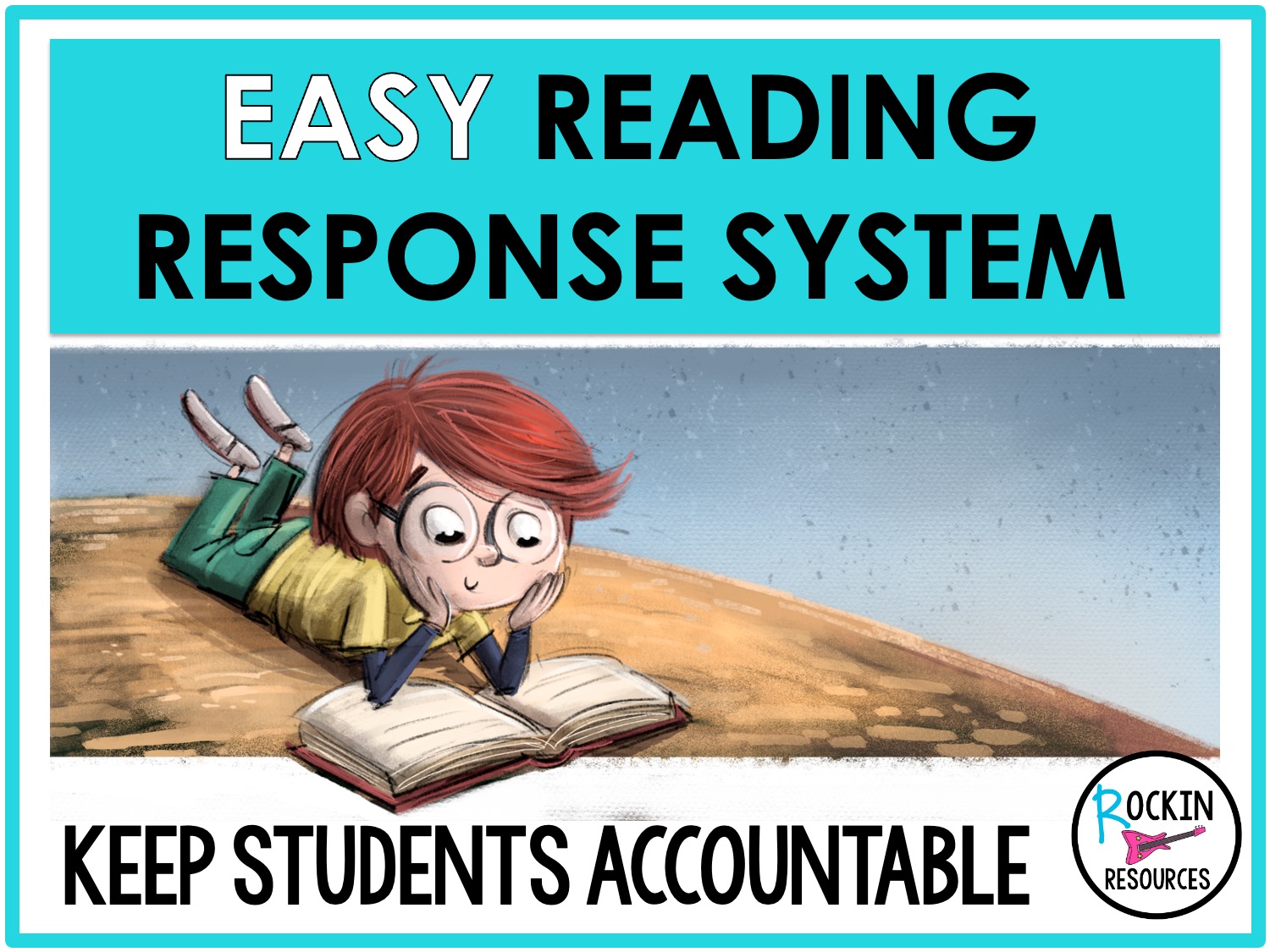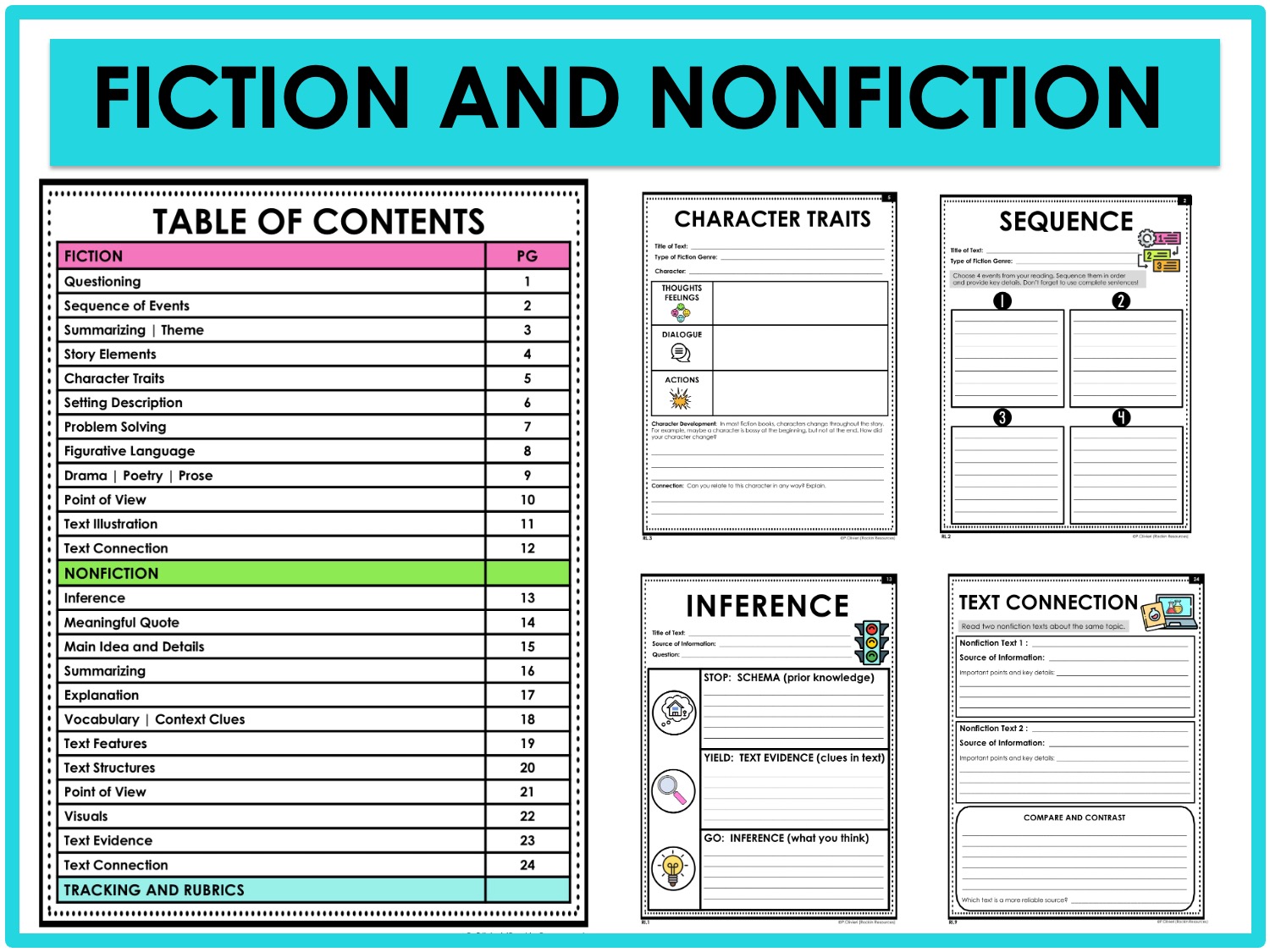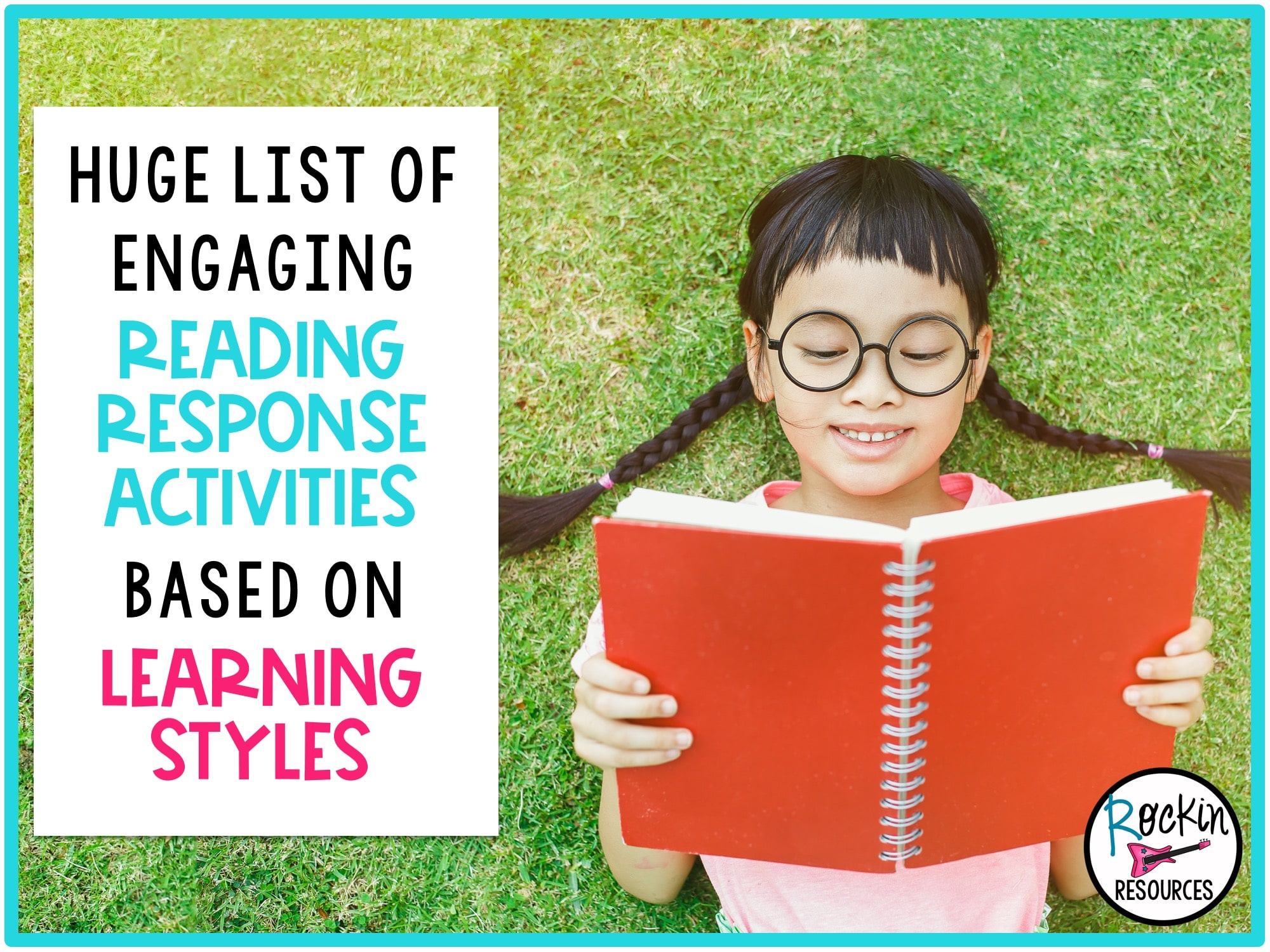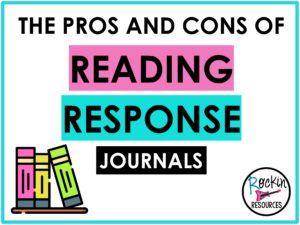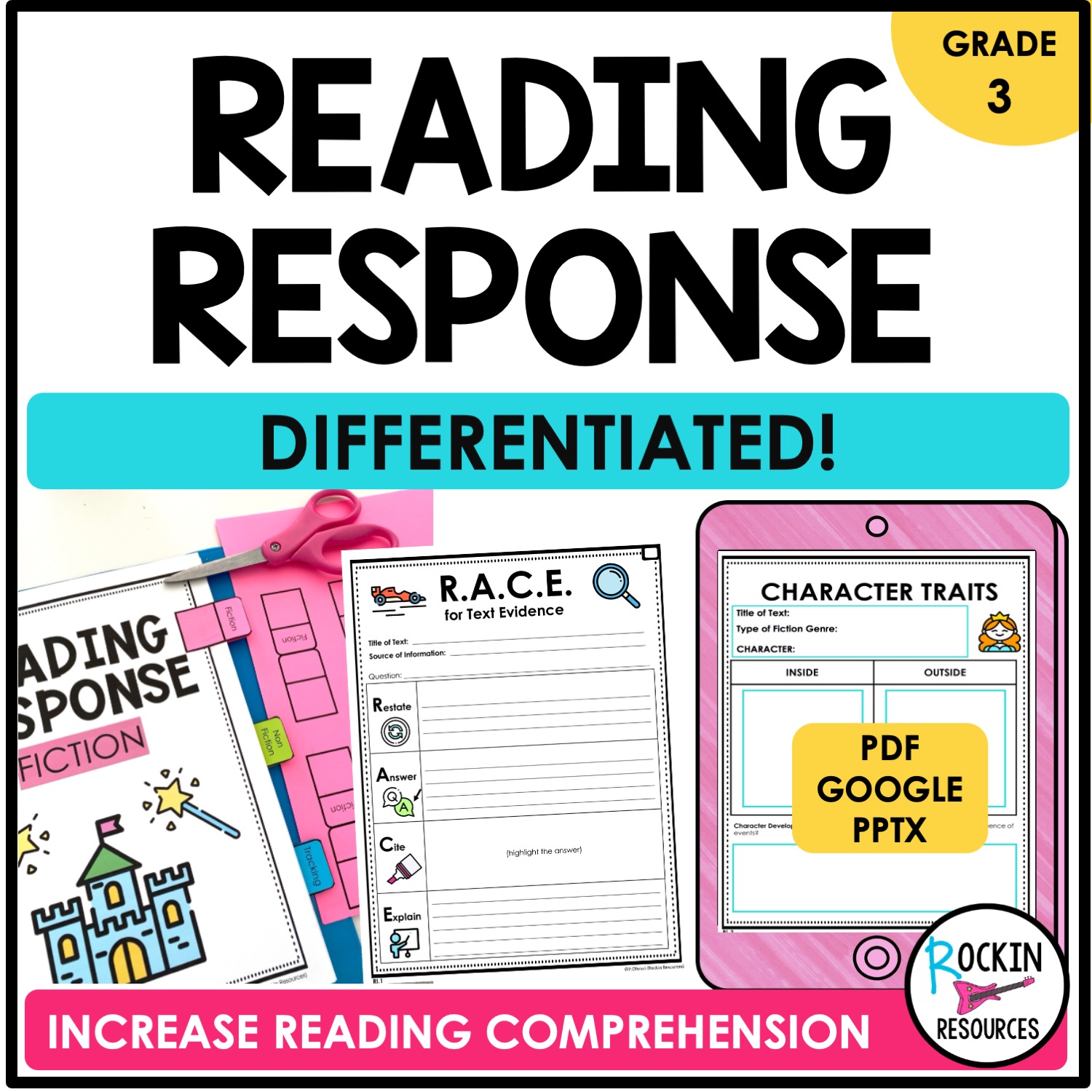Reading Response skills and strategies are important for students to have a better understanding of their reading. Whether you are reading a chapter book together, assigning book groups, or allowing for independent reading for your students, responding to the text is crucial to a deeper comprehension of the text. Students should not only respond to fiction, but also to nonfiction text.
So what is an effective way for reading response AND keep your students accountable for their reading? Reading Response Notebooks!
1. Decide what skills are necessary for your students.
2. Decide on how many times you would like to assess each skill.
Once? You can use response questions for a project where students need to complete them (fiction, nonfiction, or combination) by a due date.
Twice? Model responses for the whole group reading, then assign the same response questions for their independent reading.
Quarterly? Use the same response questions each quarter and track student progress.
3. Review the skill/strategy and your expectations with the students.
In my Reading Response Notebooks, I include 3 rubrics. One for an individual skill, another for all of the fiction skills, and the third for all of the nonfiction skills. Encourage students to write enough details to provide a thorough response. Use a rubric to explain expectations!
4. For each response, students record the title of the text and respond to the skill.
For fiction, also have them identify the type of genre. For nonfiction, have them identify the source. (ex. newspaper article, website, book, etc.)
5. After grading students’ work, track progress for each skill.
It will give you an overall view of areas they may need help in. If you use them each quarter, it will show their progress in learning that skill or strategy. This example is a quarterly tracking chart. These are effective tools when conferencing with parents too.
How do I put the notebooks together?
- Print a cover on white cardstock or have students create their own decoration for the cover.
- Have students color the cover.
- Use two different color cardstock, one for fiction and one for nonfiction.
- Add a tab for fiction and nonfiction.
- Print response pages or place enough paper for the amount of response you want for each category.
- Create a table of contents and/or tracking chart.
- Put the notebooks together: Cover page, table of contents, tracking form, fiction cover page and printable, nonfiction cover page and printables, and rubric (optional).
- Hole punch the pages.
- Place them in a 3-prong binder or folder that can support 24 pages or more if you are using them more than once. My FAVORITE is Oxford Clear Report Covers. (They fit 100 pages which works great for one time, semester, or quarterly assessments and are durable enough for reuse. I love the clear front page.)
- Add tabs and waaaahlllllaaa! You are ready for reading response!
If you would like all of this prepped for you with Common Core standards on each page, CLICK HERE OR SEE BELOW. This reading response notebook includes specific questions for each FICTION AND NONFICTION skill or strategy that guide your students to understand how to respond using their text.
See similar blogs:
DISCOVER RELATED RESOURCES:
-
Step-by-Step Reading Skills for Reading Comprehension Bundle 1
Original price was: $83.92.$68.99Current price is: $68.99.
-
3RD GRADE READING RESPONSE JOURNAL – READING RESPONSE WORKSHEETS
Original price was: $9.99.$7.00Current price is: $7.00. -
4TH GRADE READING RESPONSE JOURNAL – READING RESPONSE WORKSHEETS
Original price was: $9.99.$7.00Current price is: $7.00. -
5TH GRADE READING RESPONSE JOURNAL – READING RESPONSE WORKSHEETS
Original price was: $9.99.$7.00Current price is: $7.00.

